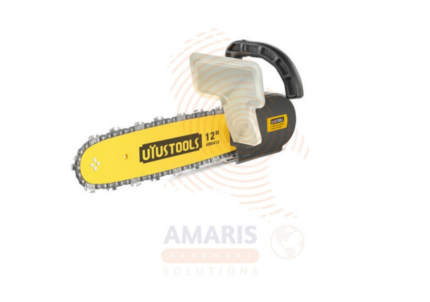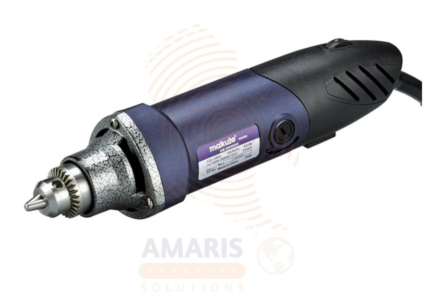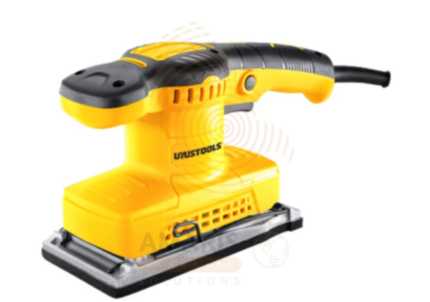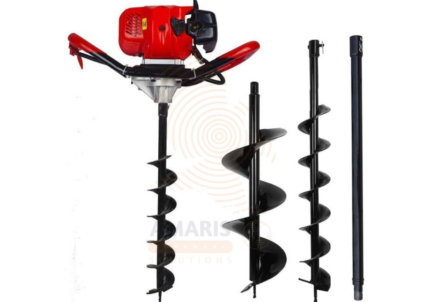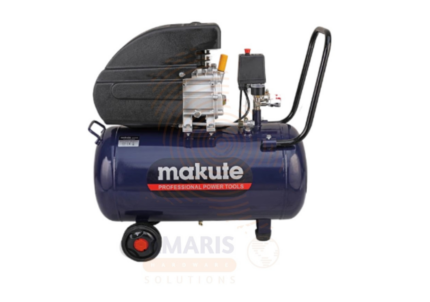
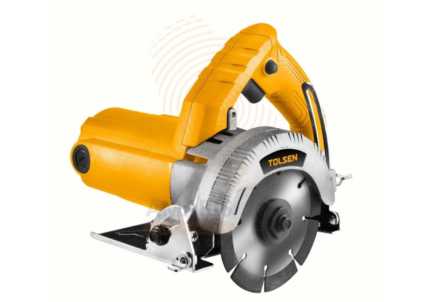
Dry Wall Sander
$138.46 Original price was: $138.46.$131.54Current price is: $131.54.
A Dry Wall Sander is a specialized tool designed for smoothing and finishing drywall surfaces. It typically consists of a flat sanding head attached to a long handle, allowing the user to reach high or wide areas. The tool is used in conjunction with sandpaper or abrasive mesh screens to remove imperfections, such as bumps, ridges, or joint compound seams, from drywall installations. Drywall sanders may be manual or powered, with some powered versions equipped with a dust collection system to minimize airborne dust during the sanding process. These tools are essential for achieving a smooth and even finish on walls and ceilings before painting or applying other wall finishes.
Table of Contents
ToggleDry Wall Sander
Uses
-
Surface Smoothing:
-
The primary purpose of a drywall sander is to smooth the surface of drywall by removing imperfections such as bumps, ridges, and joint compound seams.
-
-
Preparation for Painting:
-
Before painting, it’s essential to have a smooth and even surface. Drywall sanders help prepare the drywall for painting by ensuring a uniform and blemish-free finish.
-
-
Finishing Drywall Joints:
-
Drywall joints, where sheets of drywall meet, often require additional smoothing and blending. Sanders are used to feather out joint compound and create a seamless transition between panels.
-
-
Texture Removal:
-
In some cases, drywall may have existing textures or finishes that need to be removed or smoothed out. A drywall sander can be effective in this process.
-
-
Renovation and Repair:
-
During renovations or repairs, existing drywall surfaces may need to be patched or modified. Drywall sanders help blend new patches with the existing surface.
-
-
Ceiling Finishing:
-
Drywall sanders are especially useful for finishing ceilings where it can be challenging to achieve a smooth surface using other tools.
-
-
Dust Collection:
-
Many modern drywall sanders come equipped with dust collection systems. This feature is crucial for minimizing airborne dust, creating a healthier work environment, and reducing cleanup time.
-
-
Efficiency and Time Savings:
-
-
Drywall sanders, particularly powered ones, can significantly speed up the sanding process, making it more efficient and less physically demanding compared to manual sanding.
-
-
Professional Construction and Drywall Work:
-
-
Drywall sanders are standard tools used by construction professionals, drywall installers, and painters to achieve high-quality finishes in commercial and residential projects.
-
-
DIY Home Improvement:
-
-
DIY enthusiasts and homeowners undertaking interior remodeling or renovation projects often use drywall sanders to achieve professional-looking results in their homes.
-
Safety Precautions
-
Personal Protective Equipment (PPE):
-
Wear appropriate PPE, including safety goggles or a face shield to protect your eyes from dust and debris.
-
Use a dust mask or respirator to prevent inhalation of airborne particles.
-
Wear hearing protection if using a powered drywall sander for extended periods.
-
-
Clothing:
-
Wear long sleeves, long pants, and sturdy, closed-toe shoes to protect your skin from abrasions and potential injuries.
-
-
Workspace Preparation:
-
Clear the workspace of obstacles and tripping hazards to ensure safe movement while operating the drywall sander.
-
-
Electrical Safety:
-
Ensure that the electrical cord of the sander is in good condition, without frays or exposed wires.
-
Use a ground fault circuit interrupter (GFCI) if available to reduce the risk of electrical shocks.
-
-
Tool Inspection:
-
Before use, inspect the drywall sander for any damage, loose parts, or malfunction. Do not use a damaged tool.
-
Ensure that the sanding head is securely attached to the tool.
-
-
Dust Management:
-
Use a dust collection system or attach a vacuum to the sander to minimize airborne dust.
-
Work in a well-ventilated area, and consider using a fan to direct dust away from the operator.
-
-
Secure Workpiece:
-
Ensure that the drywall or workpiece is securely fastened or supported to prevent unexpected movements during sanding.
-
-
Safe Operation:
-
Familiarize yourself with the user manual and follow the manufacturer's instructions for operating the drywall sander.
-
Keep the sander moving while in contact with the surface to avoid creating grooves or uneven areas.
-
-
Avoiding Overreach:
-
Maintain proper balance and avoid overreaching to prevent strain on your muscles and reduce the risk of falling.
-
-
Training:
-
If you are not experienced in using a drywall sander, seek proper training or guidance before starting a project.
-
-
First Aid Kit:
-
Have a first aid kit nearby in case of minor injuries, and be aware of the location of emergency exits if you are working in a confined space.
-
-
Power Source Safety:
-
If using a powered sander, be cautious of the power cord to prevent tripping or accidentally damaging the cord.
-
Related products
Cement Blender
Chain Saw Adapter for Angle Grinder
- Chainsaw Adapter:
- A device that enables the use of a 12-inch chainsaw blade on a chainsaw designed for a different blade size. This adapter allows you to customize or replace the original chainsaw blade with a 12-inch one, potentially for different cutting applications.
- Grinder Adapter:
- An accessory that allows you to attach a grinder to a 12-inch chainsaw, converting it into a chainsaw chain sharpener. This adapter facilitates the grinding or sharpening of the chainsaw chain, ensuring optimal cutting performance.


 Acrylic Sealants
Acrylic Sealants Construction Adhesives
Construction Adhesives Double-Sided Tape
Double-Sided Tape Duct Tape
Duct Tape Electrical Tape
Electrical Tape Epoxy & Resins
Epoxy & Resins Masking Tape
Masking Tape
 Automotive Wrenches & Socket Sets
Automotive Wrenches & Socket Sets Battery Chargers & Jump Starters
Battery Chargers & Jump Starters Car Jacks & Stands
Car Jacks & Stands Car Wash & Detailing Products
Car Wash & Detailing Products Diagnostic Tools
Diagnostic Tools Tire Inflators
Tire Inflators Vehicle Lighting
Vehicle Lighting Oil & Lubricants
Oil & Lubricants
 Adhesives & Sealants
Adhesives & Sealants Bricks & Blocks
Bricks & Blocks Cement & Concrete
Cement & Concrete Drywall & Plaster
Drywall & Plaster Flooring (Tiles, Wood, Laminate)
Flooring (Tiles, Wood, Laminate) Lumber & Plywood
Lumber & Plywood Paints, Primers & Coatings
Paints, Primers & Coatings Insulation Materials
Insulation Materials Roofing Materials
Roofing Materials
 Circuit Breakers
Circuit Breakers Electrical Cables & Wires
Electrical Cables & Wires Switches & Sockets
Switches & Sockets Fuses & Relays
Fuses & Relays Connectors & Terminals
Connectors & Terminals Electrical Boxes & Panels
Electrical Boxes & Panels Conduit & Fittings
Conduit & Fittings Lighting Fixtures & Bulbs
Lighting Fixtures & Bulbs Extension Cords & Power Strips
Extension Cords & Power Strips
 Anchors
Anchors Bolts
Bolts Clips & Clamps
Clips & Clamps Screws
Screws Nuts
Nuts Washers
Washers Rivets
Rivets Nails
Nails Threaded Rods
Threaded Rods
 Hammers
Hammers Measuring Tools (Tapes, Levels, Calipers)
Measuring Tools (Tapes, Levels, Calipers) Screwdrivers
Screwdrivers Pliers & Cutters
Pliers & Cutters Saws & Blades
Saws & Blades Chisels & Punches
Chisels & Punches Allen Keys & Hex Keys
Allen Keys & Hex Keys Ratchets & Socket Sets
Ratchets & Socket Sets Wrenches & Spanners
Wrenches & Spanners
 Power Tool Accessories (Blades, Bits, Discs)
Power Tool Accessories (Blades, Bits, Discs) Rotary Tools
Rotary Tools Saws (Circular, Jigsaw, Reciprocating)
Saws (Circular, Jigsaw, Reciprocating) Drills & Drivers
Drills & Drivers Grinders & Sanders
Grinders & Sanders Heat Guns
Heat Guns Nail Guns
Nail Guns Impact Wrenches
Impact Wrenches Batteries & Chargers
Batteries & Chargers
 Pipes & Fittings (PVC, Copper, PEX)
Pipes & Fittings (PVC, Copper, PEX) Plumbing Tools
Plumbing Tools Pumps & Motors
Pumps & Motors Sealants & Adhesives for Plumbing
Sealants & Adhesives for Plumbing Valves & Taps
Valves & Taps Water Heaters
Water Heaters Drainage Systems
Drainage Systems Faucets & Fixtures
Faucets & Fixtures Hoses & Tubing
Hoses & Tubing
 Hinges & Latches
Hinges & Latches Hooks & Brackets
Hooks & Brackets Window Hardware
Window Hardware Chains & Cables
Chains & Cables Casters & Wheels
Casters & Wheels Shelving & Storage Systems
Shelving & Storage Systems Door Handles & Locks
Door Handles & Locks Drawer Slides & Cabinet Hardware
Drawer Slides & Cabinet Hardware
 Personal Protective Equipment (PPE)
Personal Protective Equipment (PPE) Respirators & Masks
Respirators & Masks Safety Glasses
Safety Glasses Safes
Safes Security Cameras
Security Cameras Gloves
Gloves Helmets
Helmets Ear Protection
Ear Protection Fire Safety Equipment
Fire Safety Equipment Locks & Padlocks
Locks & Padlocks Motion Sensors & Alarms
Motion Sensors & Alarms
 Garden Fencing
Garden Fencing Garden Furniture Hardware
Garden Furniture Hardware Lawn Mowers
Lawn Mowers Trimmers & Edgers
Trimmers & Edgers Shovels & Spades
Shovels & Spades Rakes & Hoes
Rakes & Hoes Pruning Shears & Loppers
Pruning Shears & Loppers Watering Systems (Hoses, Sprinklers, Nozzles)
Watering Systems (Hoses, Sprinklers, Nozzles)
 Interior Paints
Interior Paints Paint Brushes & Rollers
Paint Brushes & Rollers Paint Strippers & Thinners
Paint Strippers & Thinners Paint Trays & Accessories
Paint Trays & Accessories Exterior Paints
Exterior Paints Spray Paints
Spray Paints Primers & Undercoats
Primers & Undercoats Varnishes & Stains
Varnishes & Stains
 Gaskets & Seals
Gaskets & Seals Hydraulic Fittings
Hydraulic Fittings Industrial Fasteners
Industrial Fasteners Industrial Hoses
Industrial Hoses Lubricants & Greases
Lubricants & Greases Metal Sheets & Bars
Metal Sheets & Bars Bearings & Bushings
Bearings & Bushings Belts & Pulleys
Belts & Pulleys
 HVAC Filters
HVAC Filters Insulation for HVAC
Insulation for HVAC Air Conditioners
Air Conditioners Refrigerants
Refrigerants Ventilation Ducts & Fittings
Ventilation Ducts & Fittings Thermostats & Controllers
Thermostats & Controllers Fans & Blowers
Fans & Blowers
 Pegboards & Hooks
Pegboards & Hooks Shelving Units
Shelving Units Storage Bins & Containers
Storage Bins & Containers Toolboxes & Tool Chests
Toolboxes & Tool Chests Workbenches
Workbenches Drawer Organizers
Drawer Organizers Labeling Supplies
Labeling Supplies
 Welding Accessories (Clamps, Brushes)
Welding Accessories (Clamps, Brushes) Welding Electrodes & Rods
Welding Electrodes & Rods Welding Helmets & Gloves
Welding Helmets & Gloves Welding Machines
Welding Machines Soldering Irons & Stations
Soldering Irons & Stations Flux & Solder Wire
Flux & Solder Wire
 Generator Accessories
Generator Accessories Inverters
Inverters Portable Generators
Portable Generators Power Inverters
Power Inverters Transfer Switches
Transfer Switches Diesel & Gasoline Generators
Diesel & Gasoline Generators
 Transport Equipment: Carts, Dollies, and Hand Trucks
Transport Equipment: Carts, Dollies, and Hand Trucks Storage Solutions: Pallets, Racks, and Containers
Storage Solutions: Pallets, Racks, and Containers Lifting Equipment: Hoists, Cranes, and Jacks
Lifting Equipment: Hoists, Cranes, and Jacks Conveyors and Accessories: Belts and Rollers
Conveyors and Accessories: Belts and Rollers

